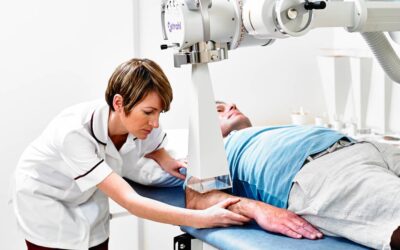In the United States, the incidence of skin cancer is greater than that of all other cancers combined, and early diagnosis can be lifesaving. A substantial public health concern, skin cancer is increasingly being diagnosed and managed by primary care physicians. Basal cell carcinoma (BCC) and squamous cell carcinoma (SCC) (known collectively as nonmelanoma skin cancer) and malignant melanoma are the most common cutaneous malignancies. Shave biopsy is usually performed if BCC is suspected; punch biopsy is preferred if SCC is thought to be present. The choice of biopsy techniques depends on the presumed depth of the lesion. Treatment has 3 goals: complete eradication of the cancer and preservation or restoration of normal function and cosmesis. Risk of recurrence or metastasis determines whether the tumor is high risk or low risk. Based on the level of risk, treatment options are considered, including whether the patient can be treated by a primary care physician or should be referred to a dermatologist. Choice of treatment approach depends on the tumor’s location, size, borders, and growth rate. The standard treatment approaches are superficial ablative techniques (electro-desiccation and curettage and cryotherapy) used primarily for low-risk tumors and full-thickness techniques (Mohs micrographic surgery, excisional surgery, and radiotherapy) used to treat high-risk tumors. Removal of the entire tumor is essential to limit and prevent tumor recurrence.
Martinez JC & Otley CC.






